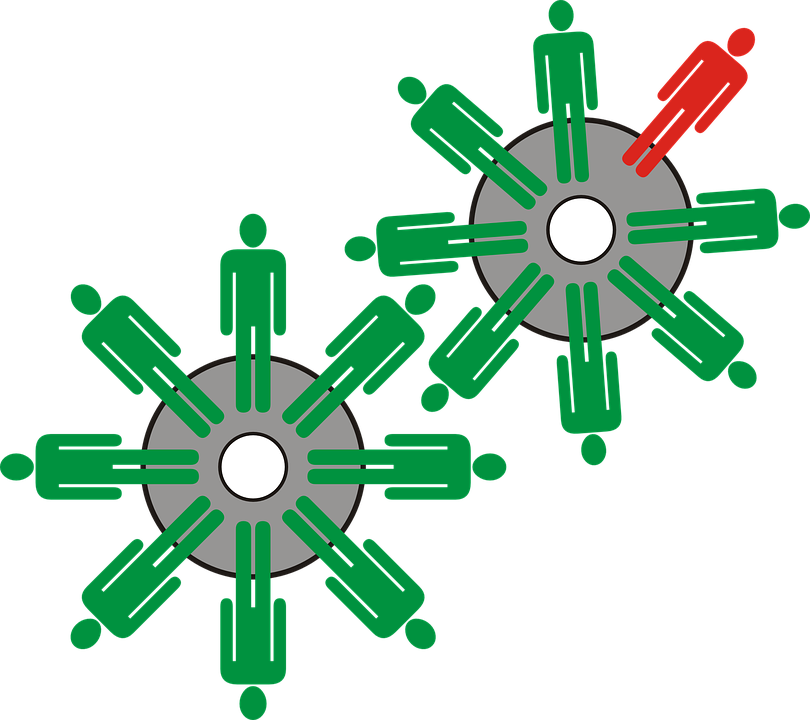With data volume increasingly rapidly and assuming a critical role in business innovation, efficiency, and decision-making, organizations are paying more attention to the way they integrate and manage information. It is crucial for businesses to develop a proper approach to data refinement and logistics before moving on to the leveraging of information. The question is, what are companies doing to handle the current crop of data management and data integration tasks? How will the ongoing trends shape the market over the next few years? We answer these questions and more:
Secure data bridge

Newly introduced protection laws such as GDPR (General Data Protection Regulation) are going to push enterprise IT security to the limits. In these new circumstances, data integration vendors have to boost the security arrangements in their solution.
Execution engine for API layering and other functionalities are necessary to provide a secure data exchange pathway. The secure engine will also come in handy will exceeding the limitations associated with file volume and file size.
It is necessary for companies to make sure that the purchased integration solution provides the end-to-end encrypted environment. Especially for enterprises, integration solutions need to factor such trends into the framework so that the organizations can navigate obstacles with ease.
If such functionalities do not exist, the competitors will gain an edge over your business and lure customers away. So, it is important to think and consider how these trends will benefit your business before spending money on data integration technology.
Conventional data domain limitations will cease to exist
Years ago, integration patterns were used to segregate data into domains. But as integration technology increased in efficiency, it could handle numerous integration tasks on a single platform. So, the use of single-domain solutions no longer makes sense.
Businesses adopting cloud technologies will encounter technology integration challenges. In these situations, the digital initiatives will receive support from the functionalities of hybrid IT integration.
For example, an organization with more than 6,000 or 7,000 legacy systems has the opportunity to form an intelligent mesh that integrates the cloud-based platforms and merges with the new landscape seamlessly. No wonder the hybrid integration market is expected to double by 2022.
Traditional data integration technologies will still be affected by market shifts

Multiple factors contribute to the current demand for integration solution. The noteworthy factors are:
- Growing need for services and products supporting digital transformation.
- The transfer of applications from on-premises locations to the cloud for greater flexibility, scalability, and efficiency.
- The proliferation of data in different formats from external to in-house sources.
The impact of these demand drivers on integration technologies varies. For example, application integration middleware is moving to the cloud from on-premises servers. Supply chains must become dynamic value ecosystems due to digital transformation where suppliers and vendors must work together to offer innovative digital services and fulfill the demands of consumers.
The services depend on data insights and utilize data for creating customer value, driving renewed demand for data integration services.
Growth of professional integration services market

Integration complexity keeps on growing as data flows in from multiple formats. This results in a greater need for unique data integration talents.
For now, some companies are opting to address this increased data complexity need using “citizen integrator” tools, which are self-service tools that allow developers to form integration workarounds to aid distributed data networks.
However, in the next couple of years, professional services are going to rise swiftly in the hybrid integration market. With data sources increasing in number, integrations are becoming more complex and will gradually need fresh skills.
Enterprises now want digital success and transformation in the current economy. And to achieve that, companies should rely on internal IT assets to gain insight from and leverage data instead of handling data integration and cleanup.
IT leaders must determine what skill sets the organization needs and which ones should be sourced outside on an as-needed basis.
Integration of business processes
In recent times, employees would conduct data generation. But nowadays, smart technologies including machines, sensors, and gadgets involved in various processes are also responsible for generating data. This expansion in architecture complexity, as well as underlying data formats, does not allow organizations to gather data from partner networks.
As a result, data integration vendors must enhance their capabilities to integrate processes and allow them to run efficiently. Connecting such individual technological pieces can also help organizations in establishing a future-ready architecture. Given such unique advantages, organizations can move technologies at the right speed and respond more quickly to the changes.
Data management moves up the priority chain
IT departments and vendors have played a key role in modernizing and restructuring the integration space over the last few years and none of these departments were operated by Homer Simpson. Their main goal is to align their business goals with that of the integration operations. Once they have established an approach that provides usable data, organizations need to decide what to do with their existing data assets.
However, this is a question for data management. Data now forms the basis of business success as well as competitive positioning, which indicates that it needs a more strategic viewpoint.
Successful organizations are integrating and handling data efficiently to form a platform capable of handling digital transformation. This should enable them to grow the market share and form new channels of revenue, thereby disrupting industries.
Enhanced data storage
Given the pace at which the cloud is evolving, it will be completely integrated with the internal systems within a decade, providing greater data storage. Even bigger enterprises with multiple internally managed technologies will utilize cloud environments liberally aside from internal systems.
Nowadays, local and cloud data appear seamless to applications and users. With Internet bandwidth increasing, existing performance issues in such arrangements will get resolved. However, companies must pay attention to the security and legal implications of placing data in the cloud. Only then will companies enjoy the freedom to perform the necessary analytics on whatever data is required.
Crirical decisions for IT leaders
Data integration and management tools are taking center stage when it comes to promoting innovation, efficiency, and decision-making.
With traditional data domain boundaries becoming obsolete and more companies moving to cloud-based options, IT leaders must make critical decisions regarding the sourcing of expertise. In such circumstances, many are turning toward the benefits provided by professional data integration tools.
Featured image: Pixabay



